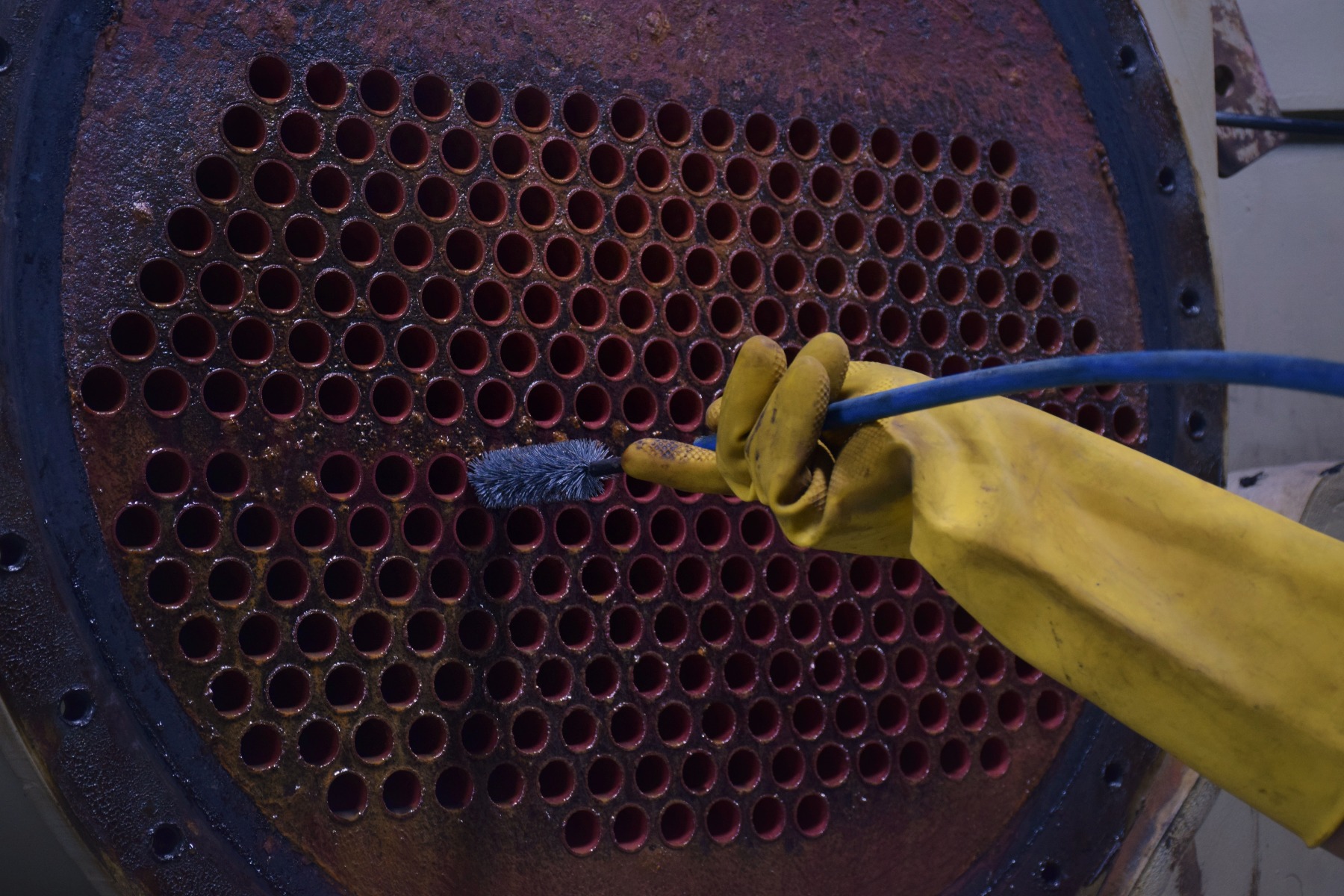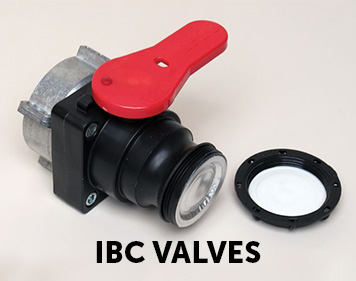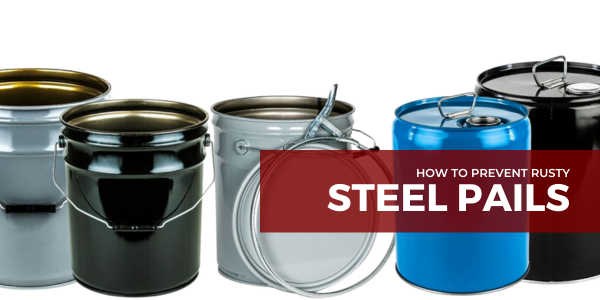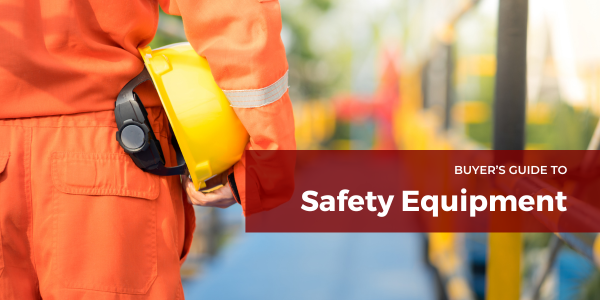Six Steps for Industrial Chiller Maintenance
All building owners that have industrial chillers should develop and implement a regular cooling and industrial chiller maintenance plan. For the state or territory where you are located, it might even be mandatory.
Your chillers are vital to the performance of any commercial or industrial air conditioning system! Properly maintained chillers keep condenser temperatures lower than unmaintained systems as well as drastic repair costs down. This paired initiative results in not only better energy efficiency and a more comfortable, properly chilled facility, but also lower utility bill costs. What is chiller maintenance? Chiller maintenance can be established by six checkpoints to perform in order to maintain your industrial chillers and cooling systems.
Let’s begin with the most crucial step of all…
#1 Keep the Chiller Tubing Clean Quarterly or Yearly (and Remove Scale Deposits/Buildup in the Process).
Invest in good chiller tube cleaners to keep your industrial chiller’s blood pumping! In many organizations, chillers use the most energy, so regular cleaning and maintenance ensure that they operate reliably and efficiently. Chiller performance is related to its heat transfer efficiency through its tubing, which makes tubing like the circulatory system in your chiller. It is reliant on heat transfer to exert a cooling effect. An obstruction to the flow of cooling fluid through condenser tubes will significantly diminish how efficiently a chiller transfers heat. Over time, corrosion can accumulate inside the chiller tubing and impede the removal of generated heat, which, in turn, makes the chiller run longer than it needs to as it overcompensates for the slower heat transfer. There are miles of tubing in a chiller’s heat exchangers. This buildup of contaminants in the pipes is called “fouling” and engineers take it into account during cooling and chiller system design. Since tube fouling can reduce heat transfer efficiency 15 percent or more, and the situation can be compounded even more by permanent scale or iron deposits that create an additional 10 to 20 percent loss in heat transfer efficiency, it is necessary that regular quarterly or at least yearly cleaning of chiller tubes is scheduled and carried out.

To prevent the buildup of mud, slime, scale, algae, and sediment you must maintain your chiller tubes according to the manufacturer’s directions. Periodic inspections and maintenance of both your closed and open systems help control the growth of Legionnaires’ disease bacteria (LDB) and other organisms. The rate at which the tubes become clogged can vary with the type of system as well as with water quality issues. When tubes become packed solid with deposits, a water flush with a tube cleaner cleans clogged tubes quickly. Using the right tools softens heavy deposits and removes all build-up including soft deposits like mud and algae. Rotary tube cleaners can clean both straight and spiral enhanced chiller tubes, removing tough deposit buildup quickly. Chemical descalers used periodically work to soften the thick scale and speed up the cleaning process.
Chiller manufacturers have recommended maintenance tasks that include periodic cleaning of the chiller and condenser tubes.

Industrial Chiller Tube Cleaning Process:
o Follow manufacturer’s shut-down procedure.
o Open the chiller to expose the tube sheet.
o Clean the tube facing. Renew a corroded tube facing with the Tube Sheet Refacing Kit.
o ID the deposits in your tubes. A video scope gives you inside intel so you know what you’re up against.
o Choose the attachment suited to the deposit type.
o Wet down tubes with a garden hose to soften dry deposits.
o Clean several tubes with a rotary cleaner.
o Evaluate results with your scope; change attachments or re-clean, if necessary.
o Clean the remainder of the tubes; spot check a few.
o Clean up and put the equipment back online.
2. Reduce the Temperature of the Condenser Water.
Reducing the temperature of the water entering the condenser of an industrial chiller significantly improves efficiency as it has to work less to exert its overall cooling effect. Although not recommended as standard practice, reducing the temperature of the water passing through the chiller’s condenser unit may serve as a measure to temporarily overcome problems with its coil.
3. Inspect the Condenser Water Loops, Again, Yearly.
Although many industrial chiller units are closed-loop chillers, some chiller condensers have water loops which utilize open cooling sources such as air-cooling towers. As a result of this environmental exposure, there is a tendency for the water to become contaminated with bacteria, corrosion, and scale, which, as we know by now, is not good.
Chilled water loops should be inspected at least yearly and treated to remove contaminants with these quick steps:
- Always disconnect the power before cleaning and protect all electrical components from water and from water entering electrical conduit lines. Then remove the covers of the chiller.
- Ensure that light is visible through the condenser coil for dirt or airborne particle build-up. Check deep into the coils with a flashlight if not, and, if dirty, clean as needed. Use water or compressed air to blow back through the coil in the opposite direction of airflow. Avoid any damage to coil fins such as bending fins flat.
- Check out your chiller’s “Y” strainer and use an inline cartridge filter for additional protection.
4. Monitor for Refrigerant Leaks.

The rate of cooling of a chiller is dependent on the amount of refrigerant circulating through its compressor. Valve stems sometimes vibrate loose and will result in refrigerant leaks. Refrigerant leaks from the compressor or the introduction of moisture into the system can also impact the cooling capacity of the chiller. Checking for leaks and maintaining a proper level of refrigerant in the chiller’s compressor unit will ensure optimal performance. Considering chiller units themselves that eliminate refrigerant leakage helps a lot as well.
5. Measure the Glycol Concentration In Order to Prevent Freezing.
Protection of system components from freezing is critical, as freezing can occur from the external ambient or internal system temperatures. The evaporator (or other heat exchanger) is the most susceptible to such freezing, even during normal operation. The fluid entering the evaporator must be capable of passing through without forming ice. Ice formation quickly restricts the flow, causing further freezing and eventual rupture. The chilled fluid needs to have a freeze point that is well below any temperature that the chiller is capable of cooling.
6. Maintain an Optimal Chilled Water Flow Rate.
The rate of flow of chilled water must be maintained to ensure adequate cooling performance. Look at the GPM/gallons per minute number of your specific industrial chillers so that you know the number of gallons of liquid per minute per ton that you need to keep efficient heat exchange.
The bottom line is that tube cleaning is a necessary preventative maintenance task for industrial chillers, and failure to do so leads to scaling, corrosion, and reduced heat transfer through the cooling system. As heat transfer efficiency goes down, operating and maintenance costs go up. No matter the size of your chiller plant, from a 130,000-feet plant or data center to the 2-ton chiller cooling your facility building, tube cleaners and other maintenance measures keep industrial chillers running efficiently so that you and your facility inhabitants stay cool.













